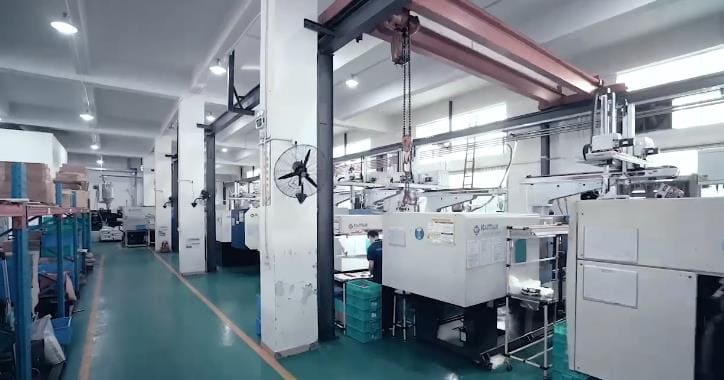1. Core Process Mechanics
Transfer Molding
Method: Thermoset preforms (e.g., epoxy, silicone rubber) are preheated and then forced by a plunger through vertical or side channels into a closed mold. Curing occurs under pressure, typically ranging from 5 to 20 MPa.
Variants:
- Vertical Transfer: Ideal for applications like silicone gaskets.
- Resin Transfer Molding (RTM): Used for fiber-reinforced composites, which are injected laterally into molds.
Injection Molding
Method: Thermoplastics (such as PP, ABS) or Liquid Silicone Rubber (LSR) are melted in a heated barrel (150–350°C) and then injected via a screw mechanism into molds. Solidification happens upon cooling.
Thermoset Adaptation: Injection molding of thermosets requires the use of heated screws and cooled molds.
2. Critical Technical Comparison
| Parameter | Injection Molding | Transfer Molding |
|---|---|---|
| Cycle Time | 30 sec – 1 min (Fast) | 2–5 min (Preheat-dependent) |
| Equipment Cost | $50K – $100K | $10K – $50K |
| Production Volume | >10,000 units | 500–5,000 units |
| Material Waste | <5% (Recyclable thermoplastics) | 10–15% (Non-recyclable thermoset flash) |
Design & Quality Capabilities
Injection Molding:
- Allows for thin walls (0.4–12.5 mm) and complex geometries.
- Limitations: Requires radii at corners, and thick sections may lead to sink marks.
Transfer Molding:
- Enables sharp edges, thick walls (>15 mm), and embedded inserts (e.g., electronic connectors).
- Particularly advantageous for encapsulating delicate components.
3. Material Science & Applications
| Process | Materials | Industry Applications |
|---|---|---|
| Transfer Molding | Epoxy, Phenolic, Silicone | O-rings, IC encapsulation, aerospace parts with insert bonding |
| Injection Molding | PP, ABS, PC, Nylon, LSR | Automotive bumpers, medical housings, consumer electronics |
4. Advanced Process Variants
- Vacuum-Assisted RTM (VARTM): Low-pressure infusion ideal for large-scale applications such as wind turbine blades, reducing void content.
- Resin Film Infusion (RFI): Pre-positioned resin films used with high-viscosity epoxies in the aerospace sector.
- Metal Injection Molding (MIM): Precision metal parts with weights less than 200g, typically for high-volume production (>5,000 units/year).
5. Process Selection Algorithm
Choose Transfer Molding when:
- Processing thermosets or silicones.
- Parts require sharp edges, metal inserts, or encapsulation.
- Low-to-medium production volumes (tooling budget under $50K).
Choose Injection Molding when:
- You need high-volume production (>10,000 units).
- Design features thin walls or complex geometry.
- Material recyclability is crucial for sustainability.
6. Market Trends & Data
Injection Molding Dominance:
- The Medical Micro-Molding market is projected to grow at a CAGR of 6.5% from 2025 to 2030.
- The On-demand Molding market is expected to reach $2.1 billion by 2031 (Grand View Research).
Transfer Molding Niche:
- Critical for over 75% of silicone medical devices and automotive seals.
7. Conclusion: Synergy in Manufacturing
While injection molding is dominant in high-volume, precision thermoplastic production, transfer molding holds its ground in thermoset encapsulation, insert integration, and mid-volume runs. Hybrid systems, such as LSR injection molding, are emerging, but material science remains the definitive factor when selecting the appropriate molding process.
Need a process recommendation? Contact our engineers for a free technical audit.



